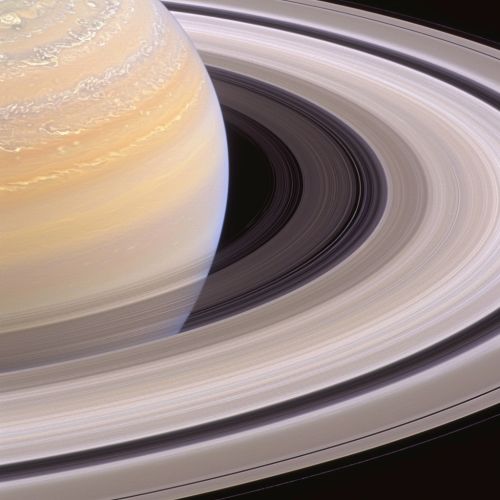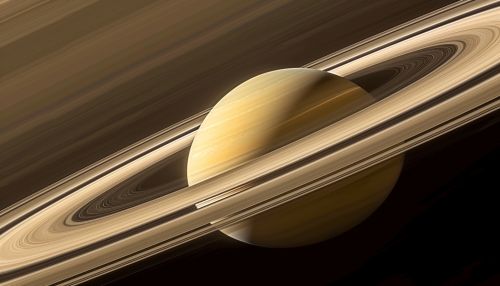Saturn's Rings
Introduction
Saturn's rings are the most extensive ring system of any planet in the solar system. They consist of countless small particles, ranging from micrometers to meters in size, that orbit about Saturn. The ring particles are made almost entirely of water ice, with a trace component of rocky material. There is still no consensus as to their mechanism of formation; some features of the rings suggest a relatively recent origin, but theoretical models indicate they are likely to have formed early in the Solar System's history.
Observation and discovery
The rings of Saturn were first observed by Galileo in 1610 through his telescope. However, he could not identify them as such. He wrote to the Duke of Tuscany that "The planet Saturn is not alone, but is composed of three, which almost touch one another and never move nor change with respect to one another. They are arranged in a line parallel to the zodiac, and the middle one (Saturn itself) is about three times the size of the lateral ones." In 1655, Huygens was the first to describe them as a disk surrounding Saturn.
Physical characteristics


Saturn's rings are extraordinarily thin: the main rings are generally only about 10 meters thick, while the main gaps in the rings can be several kilometers wide. The rings have a very broad range in particle size—from tiny, dust-sized icy grains to chunks as big as a house. Though they're extraordinarily thin, they're also incredibly wide, measuring up to 282,000 kilometers across.
Composition
The particles that make up Saturn's rings are composed primarily of water ice and contain traces of rocky material. They range in size from tiny grains to giant chunks. The exact composition of the rings is uncertain due to a variety of factors, but the rings show a significant amount of spectral variation, indicating that the rings may be composed of a variety of ices and silicate minerals.
Structure
Saturn's rings are divided into seven groups, named alphabetically in the order of their discovery: A, B, C, D, E, F, and G. The A, B, and C rings are the main rings, and are visible from Earth. The D, E, F, and G rings are fainter and more difficult to observe.
Formation and evolution
The origin of Saturn's rings is still a matter of debate. Some theories suggest that the rings could have formed from larger moons that were shattered by impacts of comets and meteoroids. Other theories suggest that the rings could have formed from the remnants of a primordial heliocentric disk, or from the tidal disruption of a comet that came too close to Saturn.
Exploration
The rings have been visited by four spacecraft: Pioneer 11, Voyager 1, Voyager 2, and Cassini. These missions have provided a wealth of data about the structure, composition, and dynamics of the rings.
